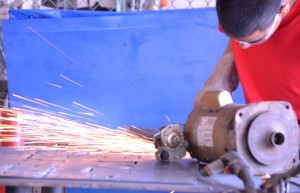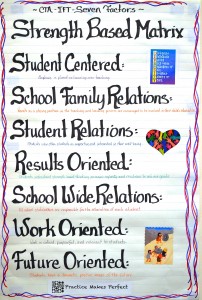This post launched my new EdWeek Teacher blog, and was published there on October 2, 2015.
Welcome to the first post on Capturing the Spark: Energizing Teaching and Schools! Let me tell you what it’s about.
Most teachers I know are constantly striving for improvement, searching for something better. Today’s lesson achieved what I wanted overall, but how can I challenge those students who grasped new material so quickly? The most recent project turned out well, but I have to find a way to simplify the steps and use our time more efficiently. That test showed that students are learning the material, but most of them missed a particular question: does the question need revision, or does the instruction need improvement? This lab helped students understand a new concept, but maybe doing labs in a different sequence would have helped even more. This last set of essays was better than expected; the next unit will need to be adjusted to take that into account. The article we studied yesterday helped prepare students for today’s discussion, but now I see that using multiple articles at different reading levels would help more students reach equitable starting points, allowing for more contributions to the class. I loved our class discussion on geography and culture today, but I wish we had heard from some students I know had great personal connections to the topic; for our next discussion I’ll make sure they’re ready to be called on so they can participate with confidence.
In addition to those daily refinements, we’re often looking for the Next Big Thing. It might involve technology, or project-based learning. A year-end, multi-day field-trip. A class or school-wide blogging project, or writing novels in class. A school-community partnership for sustainability and environmental studies. Interdisciplinary pathways through high school. Opening a new, teacher-led school.
These are incredible strengths that most of us bring to the profession, ones we’re inclined to apply in a constant effort to improve our craft and help more students have better learning experiences. To the extent that schools are not meeting the needs of all children, I find it troubling that teachers are often looked at as part of the problem rather than as the lynchpin of any reasonable solution.
When teaching conditions are good, schools are safe and well run, with satisfactory staffing and resources, teachers are in a position to great work. Nothing surprising there. We know that people in general are motivated by purposeful challenges, especially when they have some autonomy in choosing or meeting the challenge, and when they have reason to believe their work will lead to mastery and long-term success. Daniel Pink’s Drive remains the best resource I know for understanding motivation, and if you want to help students, teachers, or anyone else to do their best work, that’s invaluable knowledge. There are more than a few researchers, policymakers, politicians, administrators and members of the general public who believe a simplistic and false narrative about the failure of schools writ large, and think that top-down, deficit-based prescriptions will fix teachers. Their solutions tend to minimize teacher autonomy, and by focusing on test scores as they usually do, they neglect the sense of purpose that drives students and teachers, and focus on a vague, unsatisfying kind of mastery.
No thanks. We don’t need them to solve all our problems. We need them to do their part by putting teachers and students in a position to succeed together. Don’t bring us to the botanical garden and hothouse to show us the exotic orchids chosen by others for us to grow – and then send us off to make do, without seeds, soil, water and warmth. Instead, ensure that our students are well-supported in school and out, make sure teachers have what we need to succeed, and watch we can do. And by the way, when some of us beat the odds, don’t use that success to indict everyone who’s still fighting those odds.
In this new EdWeek Teacher blog, I’m going to focus on what energizes great teaching and schools. The idea is not to suggest that others should merely borrow and imitate great practices (though teachers do plenty of that, and it can work when done the right way for the right reasons). Beyond imitation, however, understanding how good teaching comes about is more productive than simply showing what it might look like. How do we grow as teachers and schools, thereby creating places and models that help students do the same? Where do we find our inspiration, our opportunities not only for success, but also for productive failure? How do we shift the conversation so that “best practices” never overshadow “best conditions for practice”? Less orchid, more hothouse.
While I want to focus on the positive and highlight the “spark” that animates great teaching and learning, there will also be posts that take a broader view of the profession and the policies that help or hurt us. There’s a little of the former, and too much of the latter.
I come to this point in my writing after twenty years of teaching and a decade’s involvement in various teacher leadership roles and projects. I’m also fresh off of a one-year leave of absence from my teaching.  I spent that year traveling all over California visiting schools and teachers, gathering material for a soon-to-be-published book also called Capturing the Spark (a project with no connection to EdWeek). My EdWeek Teacher blog posts from that year are over at Road Trips in Education. It was an amazing education experience, and a privilege to see the spark in so many schools and communities. That learning has certainly energized my teaching, and I look forward to sharing that learning in this new blog as well.
I spent that year traveling all over California visiting schools and teachers, gathering material for a soon-to-be-published book also called Capturing the Spark (a project with no connection to EdWeek). My EdWeek Teacher blog posts from that year are over at Road Trips in Education. It was an amazing education experience, and a privilege to see the spark in so many schools and communities. That learning has certainly energized my teaching, and I look forward to sharing that learning in this new blog as well.


